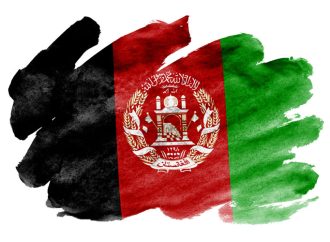Author Recent Posts Asfand Yar Khan Latest posts by Asfand Yar Khan (see all) Outcomes of the Shanghai Cooperation Organisation Heads of Government Summit – October 28, 2024 Deliberations and Outcomes of the 79th Session of the UNGA – October 11, 2024 SCO in Pakistan: Can it bring Normalcy in Indo Pak Relations? – September
The topsy-turvy relations between South Asian arch rivals India and Pakistan took a new turn with India’s announcement to deploy Pralay – a short range ballistic missile (SRMB), at its borders with China and Pakistan. The move may further speed up the decades old nuclear arms race in South Asia. According to initial reports, India while displaying its aggressive posturing has approved the purchase of 120 SRBMs. The latest addition to the Indian nuclear arsenal and its deployment did not come under discussion in the Indian Parliament. However, Indian nuclear experts have welcomed the move, calling it a much needed preemptive measure to ensure the protection of Indian borders in case of any armed conflict with both China and Pakistan. Pralay missiles are said to be able to hit targets at a distance of up to 500km and are difficult to intercept due to their ability to change their path. Often compared with the Russian Iskander missiles, the Pralay ballistic missile has only been used in two tests as of yet.
Since the end of cold war, South Asia has been seen as the only nuclear flashpoint in the world. India has recently amended its nuclear policy to add tactical nuclear weapons for military use like Pakistan and China. However, it is not the weapons that may trigger an arms race, but their deployment along the borders of China and Pakistan. Perceiving Delhi’s latest move as a threat, China and Pakistan will most likely seek to deploy tactical weapons too, making a nuclear miscalculation more possible in times of a low intensity conflict. India has recently been involved in armed skirmishes with both Pakistan and China, where the Indian military muscle was found highly ineffective and laborious. Realizing its weaknesses, Delhi considered nuclearizing its already active borders.
Like all other tactical nuclear weapons (TNWs), Pralay Missiles are also designed to be used against military installations such as air defence systems, command and control setups, and advanced airfields. The introduction of tactical weapons into the Indian strategic arsenal comes after India’s consecutive recent military failures at Dokhlam against China, and at the Line of Control against Pakistan in February 2019. India’s move to nuclearize its active borders is a pure manifestation of BJP’s hardline aggressive narratives against neighbouring countries. It is extremely disturbing to witness the silence of the international community, particularly the USA, on a matter that would blatantly speed up the arms race in the Region and might as well adversely impact the strategic stability of South Asia. The deployment of missiles comes at a time when both China and Pakistan are engaged internally. Former is battling against the resurgence of COVID-19, while later is going through economic and political upheavals coupled with climate induced floods and the resurgence of foreign sponsored TTP and other banned outfits.
Pakistan should adopt a more proactive approach to highlight India’s aggressive posturing at all the international forums. Foreign Office must lead an international campaign to unmask Indian strategic designs that seek to jeopardize world peace. International organizations like Global Zero, which aim to denuclearize the world must be reached for collaboration to build up narratives against Indian aggression. Islamabad and Beijing should sensitize the international community regarding the nuclearization of their borders and the following consequences. International nuclear regimes such as the International Atomic Energy Agency (IAEA) and the Nuclear Suppliers Group (NSG) need to be apprised of India’s irresponsible actions that may lead the world into an unwanted nuclear catastrophe.
In continuation with its nuclear policy, Islamabad, along with diplomatic engagements must maintain minimum credible deterrence vis-à-vis India. Any deployment of tactical ballistic missiles at the LOC must be responded by even more effective and efficient deployment. Pakistan’s tactical nuclear weapons program that nullifies Indian conventional superiority needs to be enhanced further in order to deter Delhi’s pointless aggression. Introduction of new delivery systems, missiles, and BMDs are altering the strategic order of South Asia. In order to cope with the evolving situation, more funds need to be injected in Pakistan’s indigenous nuclear program. As any nuclear deployment by India directly threatens Pakistan’s national security, there must be an equally aggressive response from Islamabad. An aggressive reply would compel the international community to pressurize India to reevaluate its aggressive posturing. Governments in Delhi and Islamabad need to initiate dialogue that takes both countries towards disarmament instead of going into a never ending arms race. A treaty such as START between Russia and the USA is the need of the hour as both India and Pakistan need to concentrate towards human development instead of nuclearization. Ballistic missiles cannot feed people living in poverty.
- Outcomes of the Shanghai Cooperation Organisation Heads of Government Summit - October 28, 2024
- Deliberations and Outcomes of the 79th Session of the UNGA - October 11, 2024
- SCO in Pakistan: Can it bring Normalcy in Indo Pak Relations? - September 26, 2024













Leave a Comment
Your email address will not be published. Required fields are marked with *